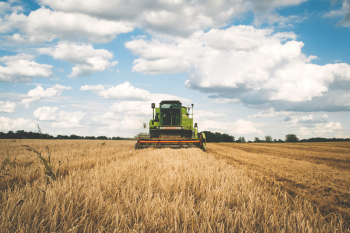Earlier this month, the FCC released a report that found higher agricultural yields in areas with broadband availability. Before we dive in, let’s offer a qualifier: the report relies on FCC Form 477 data, which is currently the subject of (as the FCC observed) a “compelling and immediate” overhaul. Moreover, the findings are tracked to areas with 25/3 and above, but do not distinguish outcomes in areas based upon various tiers of speed availability (i.e., whether results differ at 50/10 or 100/100). The author offers a reasoned explanation for this approach, yet this leaves open an opportunity for more detailed analyses. Nevertheless, these features of the study, in my opinion, make the report even more compelling. Allow me to explain.
To begin, “Impact of Broadband Penetration on U.S. Farm Productivity” is a product of the FCC Office of Economics and Analytics. By way of example, it finds that a 1 percent increase in 25/3 broadband connections per 1,000 households is associated with a 3.6 percent increase in corn yields. That finding is significant because according to the USDA, more than 90 million acres in the United States are planted to corn. Most of these crops are directed toward feeding livestock, another major contributor to the U.S. ag economy. All told, the production value of corn for grain alone was about $52.91 billion in 2019, and cash receipts for animals and animal products reached $120 billion in 2019. So, arguably, a 3.6 percent increase in yields that (no pun intended) feed those markets warrants recognition.
And let’s take another step back to assess the important value of the study. We take as axiomatic that many ventures benefit from broadband. The past several months have demonstrated the critical role that broadband plays in supporting education, commerce, and healthcare. Oftentimes, however, the intuitive understanding of the need for broadband is insufficient to sway policy. Rather, empirical findings are necessary to buttress subjective (albeit well-founded) assumptions. NTCA has harnessed this approach several times, including its Smart Rural Community paper on the economic benefits of rural telehealth, and a recent Foundation for Rural Service study that explored the impact of rural e-commerce transactions on the U.S. economy. And Smart Rural Community is preparing a series of fact sheets that we call “Numbers and Narrative” — empirical data about telehealth, telework and other issues coupled with profiles of NTCA members that are putting those principles into action.
So the value off the FCC paper is that it provides data to support the field of assumptions we hold about precision ag, and how broadband-enabled IoT, AI and other processes increase yields and productivity for a major contributor to the U.S. GDP and labor markets. And if we accept the proposition that broadband plays a major role, then it follows that broadband deployment will tend to increase opportunities, yields and efficiencies in that industry.
The paper is too rich to digest in this blog post, but to whet your appetite, here are some findings: (1) USDA data point to more mobile wireless than fiber or cable connections; this is not surprising given the critical role of mobile, broadband-enabled sensors in precision ag; (2) at the same time, the number of DSL and dialup connections in regions covered by the USDA Census of Agriculture declined in 2012–2017, as did slower-speed connections overall, mirroring findings in the latest NTCA broadband survey report that shows increasing fiber builds; (3) the study accounts for the fact that larger farms tend to adopt precision ag technology sooner than smaller farms, a finding noted by other studies; (4) corn, cotton, hay, soybeans and wheat all demonstrate increased yields as higher broadband speeds are made available. These data, in sum, suggest that increased broadband availability should stimulate greater efficiencies and higher yields across a variety of row crops as more farmers take advantage of precision ag. Moreover, increased use of precision ag should tend to lower prices and encourage broader use among smaller farmers.
Of course, all of the makes sense. But the FCC report demonstrates the data in dollars, and that’s the data that can make the difference.


